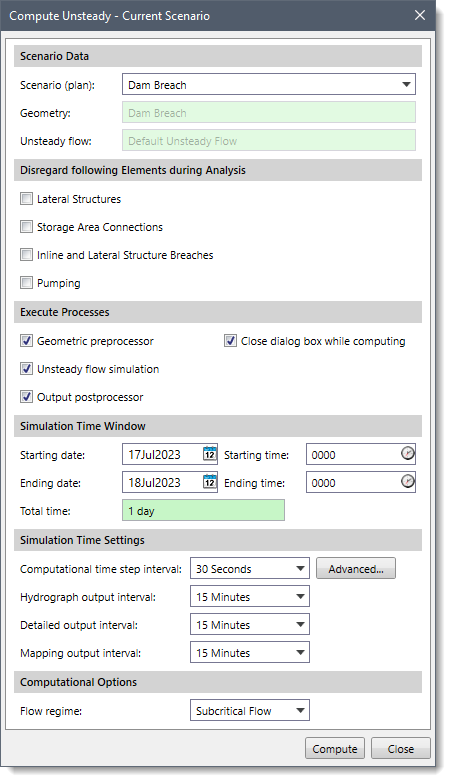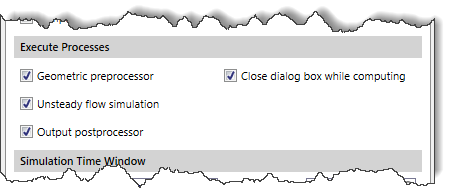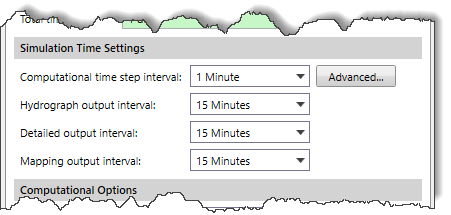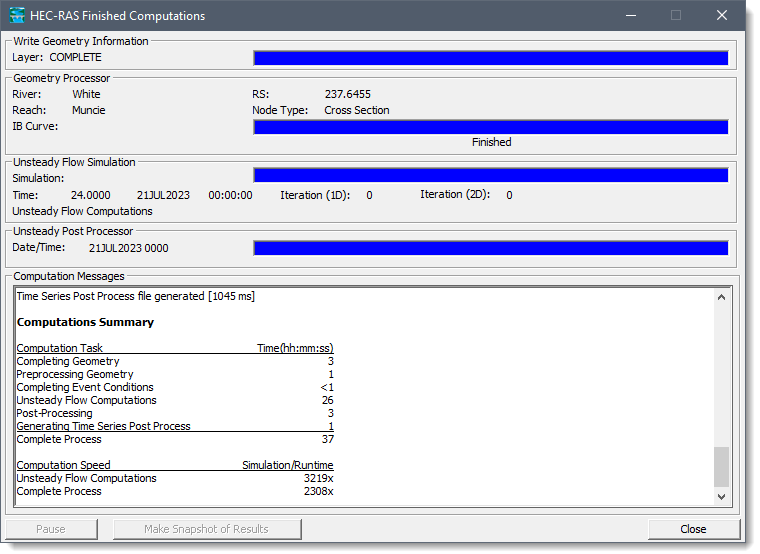
Welcome to CivilGEO Knowledge Base
Welcome to CivilGEO Knowledge Base

Welcome to CivilGEO Knowledge Base
Welcome to CivilGEO Knowledge Base
HEC-RAS analysis refers to a simulation that analyzes the flow of water in a river or channel over a specific time period. The simulation computes the evaluation of water levels, velocities, and other hydraulic parameters at different locations along the river during unsteady flow conditions, such as floods or varying discharges.
When all geometric and unsteady flow data are entered in the project, the user can perform the hydraulic calculations. In GeoHECRAS, the Compute Unsteady – Current Scenario command allows the user to perform an analysis of the current scenario (plan) for unsteady flow models.
Follow the steps below to use the Compute Unsteady – Current Scenario command:


The following sections describe how to use the Compute Unsteady – Current Scenario command and interact with the above dialog box.
This section allows the user to define the scenario data to be used in the unsteady flow simulation.
The following options are provided in this section:
This section allows the user to select elements to be disregarded or not considered in the simulation. The user can check/uncheck the checkbox(s) corresponding to each element to select/deselect them.
The following checkbox options are provided in this section:
This section contains three components to be used in performing an unsteady flow analysis within HEC-RAS.

The following checkbox options are provided in this section:
This section defines the starting date and time and ending date and time of the HEC-RAS hydrology simulation. The user can click on the [Date] button, which displays a calendar date selector from which the user can select a specific date. Similarly, the user can click on the [Time] button, at which point the software displays a 24-hour time selector from which the user can select a specific time.

This section contains the computational time step interval, hydrograph output interval, detailed output interval, and mapping output interval for defining the simulation time settings.

The following options are provided in this section:
This section allows the user to define the flow regime to be computed by the HEC-RAS unsteady flow analysis engine.

The Flow regime dropdown combo box lists the following options:
When all the options have been properly defined, click the [Compute] button. The dialog box will be closed, and HEC‑RAS immediately starts performing the analysis for the current scenario in a separate window showing the progress of the computations. The information that appears in the window is an indicator of software progress during the computations and a list of any computational messages that come up during the run. When the computations have been completed, the user can click the [Close] button to close the dialog box. If a problem is detected in the model data or analysis, the software will display a dialog box detailing the issue and will stop the process.

Note that a terrain surface must be assigned in the project before running the analysis. Otherwise, the following informational dialog box will be displayed when you click on the [Compute] button.
 1-800-301-02-955
1-800-301-02-955
 608-729-5100
608-729-5100
(US and Canada)
 [email protected]
[email protected]
 +1 608-729-5100
+1 608-729-5100
CivilGEO India
Graphix Tower, A-13 A
3rd Floor, Sector 62
Noida, Uttar Pradesh 201309
IndiaTel:
1-800-301-02-955 or
+91 022-3831-8601
CivilGEO United States
8383 Greenway Blvd
6th Floor
Middleton, WI 53562
USATel:
608-729-5100 or
800-488-4110
Copyright © CivilGEO, Inc. All rights reserved. The CivilGEO logo, “GeoSTORM”, “GeoHECHMS”, “GeoHECRAS”, and “Ready To Engineer” are registered trademarks of CivilGEO,Inc.
All other brands, company names, product names or trademarks belong to their respective holders.
We use cookies to give you the best online experience. By agreeing you accept the use of cookies in accordance with our cookie policy.
When you visit any web site, it may store or retrieve information on your browser, mostly in the form of cookies. Control your personal Cookie Services here.
The ZoomInfo WebSights snippet drops three cookies to track Unique Visits:
1. _pxhd - Related to the Perimeter X security layer (Perimeter X isused to prevent bot attacks).
2. _cfduid - Related to the CloudFlare security layer (CloudFlare is the Network Security protocol that ZoomInfo uses to orchestrate the rate limiting rules).
3. visitorId - This is how WebSights identifies recurring visitors








